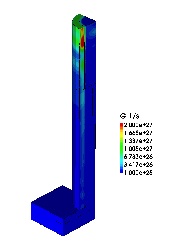
Bernd Witzigmann
Kassel University, Germany
Title: III-V nanowire arrays as a platform for photovoltaics, solid state lighting and electronics
Biography
Biography: Bernd Witzigmann
Abstract
In this presentation, the physical principles of semiconductor nanowire arrays are discussed, with a focus on applications for photovoltaics and solid state lighting. Both of these fields are pivotal for green photonics technologies. As analysis tools, specific physics-based numerical models for nanophotonics and nanoelectronics have been developed, which will be discussed. In particular, the three-dimensional nature of a wire array, including the substrate and the free space on top is included in the study. For the optical extraction efficiency of an LED, absorption of electromagnetic energy in the contacts and the active layers themselves, as well as re-emission (photon-recycling) are investigated. The latter is an effect that couples the electronic and the optical system. In addition, the optical density of states is analyzed and its impact on the extraction efficiency is shown. Finally, the total electro-optical efficiency of a nanowire array LED emitting at 400nm is presented and compared to conventional efficient thin-film LEDs. It is shown that the efficiency droop commonly observed in III-nitride based LEDs can be shifted to high operating currents. For the nanowire array solar cell, a detailed electromagnetic and electronic analysis is presented, from which fundamental rules in terms of materials choice and wire geometry will be derived. It shows that low density regular III-V nanowire arrays can reach absorptivities identical to bulk cells, with the advantage of substrate flexibility, low material consumption, and improved strain engineering for multi-junction cells. As outlook, the integration of III-V nanowire arrays for electronic and optical functional devices will be discussed and some applications are shown.

Figure 1: Optical generation rate in an InGaN/GaN core-shell nanowire solar cell
Recent Publications
[1] B Witzigmann, R Veprek, S Steiger, and J Kupec, J. Comp. El., No. 4, Vol. 4, pp. 389-397, 2009, (invited).
[2] F Yu, D Rümmler, J. Hartmann, L. Caccamo, T. Schimpke, M. Strassburg, A. Gad, A. Bakin, H. Wehmann, B. Witzigmann, H. Wasisto, and A. Waag, Applied Physics Letters, 108, 213503 (2016)
[3] C. Kölper, M. Sabathil, F. Römer, M. Mandl, M. Strassburg, and B. Witzigmann, Phys. Stat. Sol. A, 1-9, 2012.
[4] J. Kupec, R. Stoop, and B. Witzigmann, Optics Express, Vol. 18, No. 26, p. 27589-27605, 2010.
[5] J. Wallentin, N. Anttu, D. Asoli, M. Huffman,I. Åberg, M. Magnusson, G. Siefer, P. Fuss-Kailuweit, F. Dimroth, B. Witzigmann, H. Q. Xu, L. Samuelson, K. Deppert, M. T. Borgström, Science 1 March 2013: Vol. 339 no. 6123 pp. 1057-1060.
